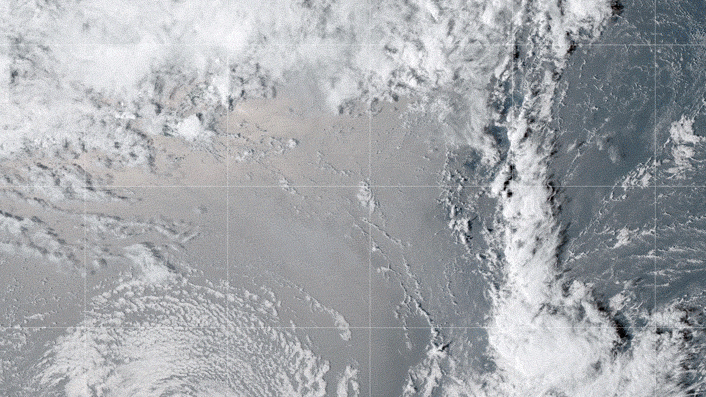
When the Hunga Tonga-Hunga Ha'apai volcano in Tonga erupted in 2022, it generated the most intense lightning ever recorded, a new study finds.
Located off the coast of the Kingdom of Tonga in the South Pacific, the submarine volcano produced one of the most violent eruptions in history, with more explosive force than 100 simultaneous Hiroshima bombs, according to NASA. The volcano spewed magma that immediately vaporized the seawater, sending a mushroom cloud of ash, gas and more than 50 million tons (45 million metric tons) of water vapor into the sky.
According to the new study, published Tuesday (June 20) in the journal Geophysical Research Letters, these conditions produced electrically charged collisions between ash, supercooled water and hailstones in the plume and triggered "a supercharged thunderstorm, the likes of which we've never seen," study lead author Alexa Van Eaton, a volcanologist at the U.S. Geological Survey (USGS), said in a statement. The storm generated more than 192,000 lightning flashes — composed of nearly 500,000 electrical pulses — and peaked at 2,615 flashes per minute. Some of the lightning reached altitudes of up to 19 miles (30 kilometers) above sea level, the highest lightning flashes ever measured, the researchers said.
Related: Tonga's massive volcanic eruption wiped out unique, never-before-seen life-forms
"With this eruption, we discovered that volcanic plumes can create the conditions for lightning far beyond the realm of meteorological thunderstorms we've previously observed," Van Eaton said. "It turns out, volcanic eruptions can create more extreme lightning than any other kind of storm on Earth." That includes lightning from supercell storms and tropical cyclones, according to the study.
For their analysis, the scientists compiled data from four sources, including the satellite-based Geostationary Lightning Mapper, a NASA tool that tracks lightning from space. When the volcanic plume mushroomed outward after reaching its maximum height, in a pattern known as a gravity wave, some of the lightning followed suit, rippling out around the volcano in concentric rings that expanded and contracted, the study found.

"It wasn't just the lightning intensity that drew us in," Van Eaton said. "The scale of these lightning rings blew our minds. We've never seen anything like that before; there's nothing comparable in meteorological storms. Single lightning rings have been observed, but not multiples, and they're tiny by comparison."
The data also revealed that the plumes created by the Hunga Tonga-Hunga Ha'apai eruption grew for at least 11 hours — much longer than original projections of only an hour or two, the researchers said. This method of tracking lightning intensity alongside eruptive activity could enable scientists to better monitor the duration of volcanic eruptions and thus warn people about eruption-related risks.
"These findings demonstrate a new tool we have to monitor volcanoes at the speed of light and help the USGS's role to inform ash hazard advisories to aircraft," Van Eaton said.







